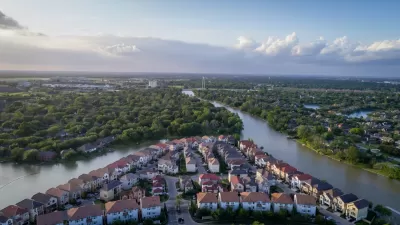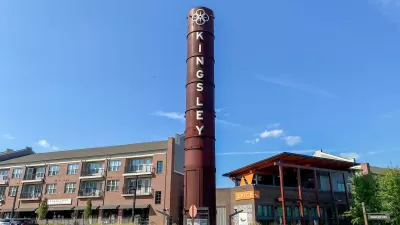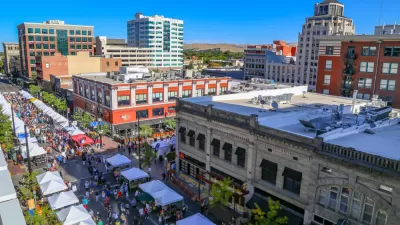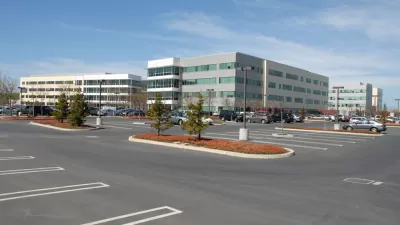Developers in Fort Bend County are drawing inspiration from ‘agrihoods’ to build car-light communities in one of the nation’s fastest-growing areas.

Fort Bend County, a rapidly growing county adjacent to Houston, Texas, more than doubled its population in the last two decades, writes John Brannen in the Kinder Institute for Urban Research’s Urban Edge blog. Now, developers building in the largely suburban and rural area are taking cues from cities to create communities with urban-style amenities that retain a connection to their rural, agricultural roots.
One development, Indigo, aims to be “an ecosystem” that connects housing, agriculture, and other uses in a compact area. “What we’re trying to accomplish is human-oriented development. When you start thinking through a humanistic lens, you start to uncover some challenges, some opportunities and some solutions,” says Indigo developer Clayton Garrett.
According to Brannen, “Indigo will feature eight housing types, with 650 units for purchase and 100 rental properties. They include cottages, three-story townhomes, duplex-style housing called “duets,” 35-foot and 45-foot alley-loaded homes with rear-facing garages and a small number of traditional 50-foot frontloaded homes — the only homes that will have driveways on the street.” Every other street in the development will be a linear park.
Indigo co-developer Snodgrass says “All of the residents’ local travel for immediate daily needs, exercise, and leisure can be handled by walking. Eighty-five percent of our homes are within a quarter mile of our town center area.” However, Snodgrass acknowledges the limitations of building a new community in an area lacking a local bus system, where residents will still need to rely on personal vehicles for longer trips.
FULL STORY: As Fort Bend becomes increasingly urban, developers see opportunity to rethink neighborhood design

Trump Administration Could Effectively End Housing Voucher Program
Federal officials are eyeing major cuts to the Section 8 program that helps millions of low-income households pay rent.

Planetizen Federal Action Tracker
A weekly monitor of how Trump’s orders and actions are impacting planners and planning in America.

The 120 Year Old Tiny Home Villages That Sheltered San Francisco’s Earthquake Refugees
More than a century ago, San Francisco mobilized to house thousands of residents displaced by the 1906 earthquake. Could their strategy offer a model for the present?

HSR Reaches Key Settlement in Northern California City
The state’s high-speed rail authority reached an agreement with Millbrae, a key city on the train’s proposed route to San Francisco.

Washington State Legislature Passes Parking Reform Bill
A bill that would limit parking requirements for new developments is headed to the governor’s desk.

Missouri Law Would Ban Protections for Housing Voucher Users
A state law seeks to overturn source-of-income discrimination bans passed by several Missouri cities.
Urban Design for Planners 1: Software Tools
This six-course series explores essential urban design concepts using open source software and equips planners with the tools they need to participate fully in the urban design process.
Planning for Universal Design
Learn the tools for implementing Universal Design in planning regulations.
Ada County Highway District
Clanton & Associates, Inc.
Jessamine County Fiscal Court
Institute for Housing and Urban Development Studies (IHS)
City of Grandview
Harvard GSD Executive Education
Toledo-Lucas County Plan Commissions
Salt Lake City
NYU Wagner Graduate School of Public Service





























